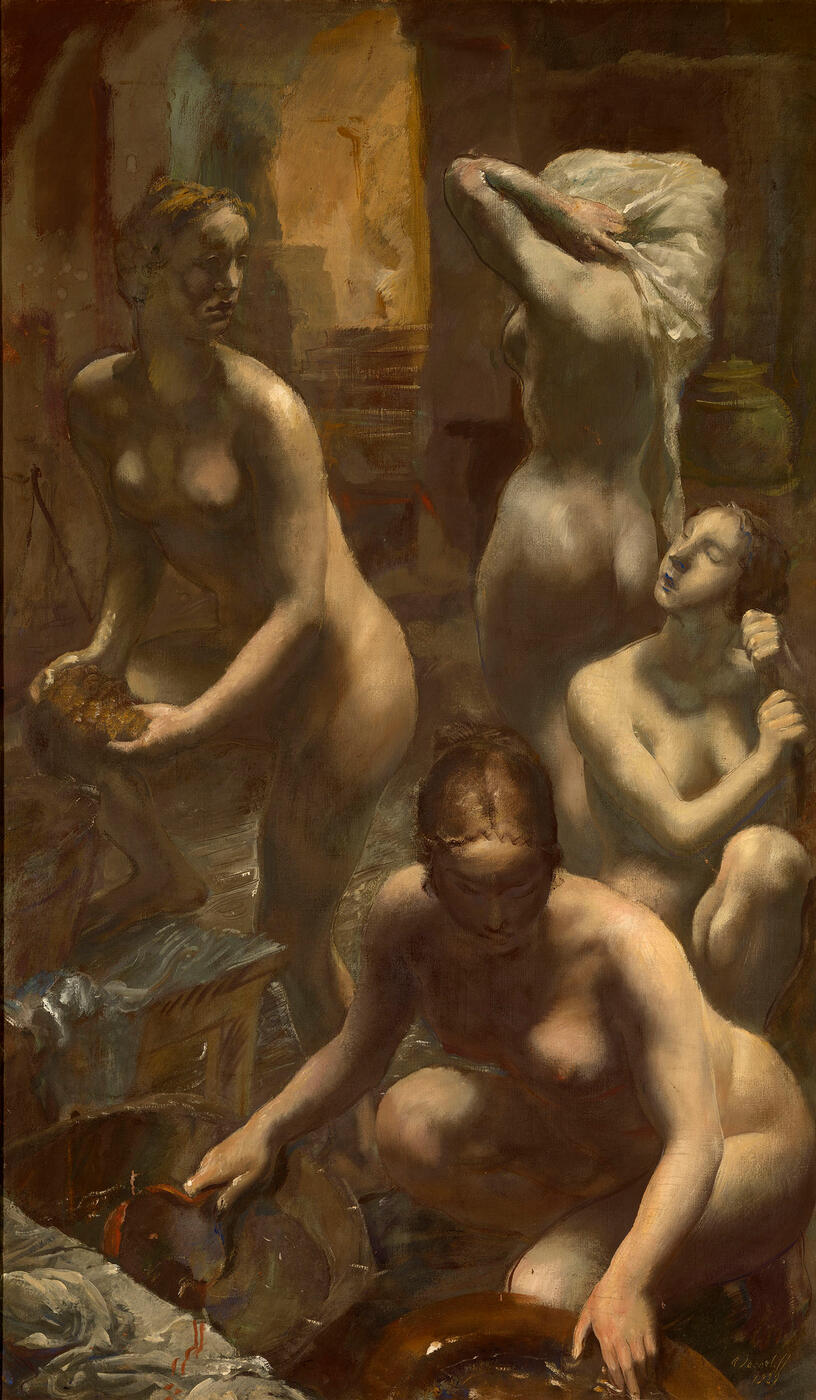30 November 2016 Russian Art Auctions
30 November 2016

39. YAKOVLEV, ALEXANDER (1887-1938)
Nudes Bathing, signed and dated 1929.
Tempera on canvas, 155 by 92 cm.
300,000–500,000 GBP
Provenance: The artist’s estate.
Acquired from the above by Vose Galleries, Boston, 1948.
Reacquired from the above by the artist’s estate, 1956.
Collection of Roger Prigent.
Modern and Contemporary Paintings, Drawings and Sculpture, Sotheby’s New York, 28 February 1992, lot 120.
Russian Art, Sotheby’s New York, 17 April 2007, lot 335.
Private collection, UK.
Exhibited: Alexandre Iacovleff Memorial Exhibition, Fitchburg Art Museum, Fitchburg, January–February 1954.
Alexander Yakovlev’s painting Nudes Bathing, offered here for auction, is the largest of his nudes executed in Paris in 1929. It combines the artist’s most recent colouristic insights with the development of his beloved subject of the Russian bath house and Neoclassical form. At the same time, alongside the artist’s obvious interest in 17th-century Old Masters, the modern influence of Paul Cézanne’s Baigneuses is clearly discernible.
As a homage to the traditions of the Old Masters, the work palpably expresses an allegorical treatment of the women and compositionally too, with each of them included within a common circle and yet simultaneously turned towards the viewer, in the difference in scale of the primary and secondary subjects, the localisation of colour, the smooth brushstrokes, the glazing and the brown background. The austere, almost monochrome use of colour is nonetheless ideal for emphasizing the sensuous, youthful, statuesque figures of the women, locked in their circular motion. This interpretation of the nude figures and their corporality evokes the influence of Cézanne.
The picture contains no superfluous details. Yakovlev brings the figures of the young women close to the viewer and deliberately makes them larger than he normally would. The image of the bathing women becomes a personification of the eternal, timeless ideal of health, femininity and the beauty of a youthful naked body.
Yakovlev was undoubtedly among the first-rate masters of Neoclassicism in the 1920s. Furthermore, Yakovlev reinterpreted Neoclassicism in a personal and innovative manner, influenced by both his keen interest in the classics as well as the latest artistic movements, particularly Cubism
and Neo-Primitivism, with their techniques of deformation.
Some critics were offended by the stylisation found in Yakovlev’s work, and its overt eclecticism. Alexander Benois, in defence of the artist, responded in the following way: “You can regard Yakovlev however you like … but there is one thing you should be in no doubt about – that he is a phenomenon… What a master he is... Without any effort he can sketch a magnificently formed figure in a few minutes, bending it however he wants..., painting it in whatever colours he likes ... We need to learn from him… not speculate about his art, not be outraged by the antics of Apollo’s golden boy toying with the most difficult things as if it were merely childish nonsense.”
Wherever Yakovlev lived – Russia, China, France or the USA – the essence of his art hardly changed; and the different versions of his bathing nudes are invariably among his most acclaimed works. For a long time, Nudes Bathing remained in the collection of the artist’s family, before its sale in 1948 to Vose Galleries. After a successful exhibition of the artist’s work in 1954, the painting was reacquired by the artist’s family.
Notes on symbols:
* Indicates 5% Import Duty Charge applies.
Ω Indicates 20% Import Duty Charge applies.
§ Indicates Artist's Resale Right applies.
† Indicates Standard VAT scheme applies, and the rate of 20% VAT will be charged on both hammer price and premium.